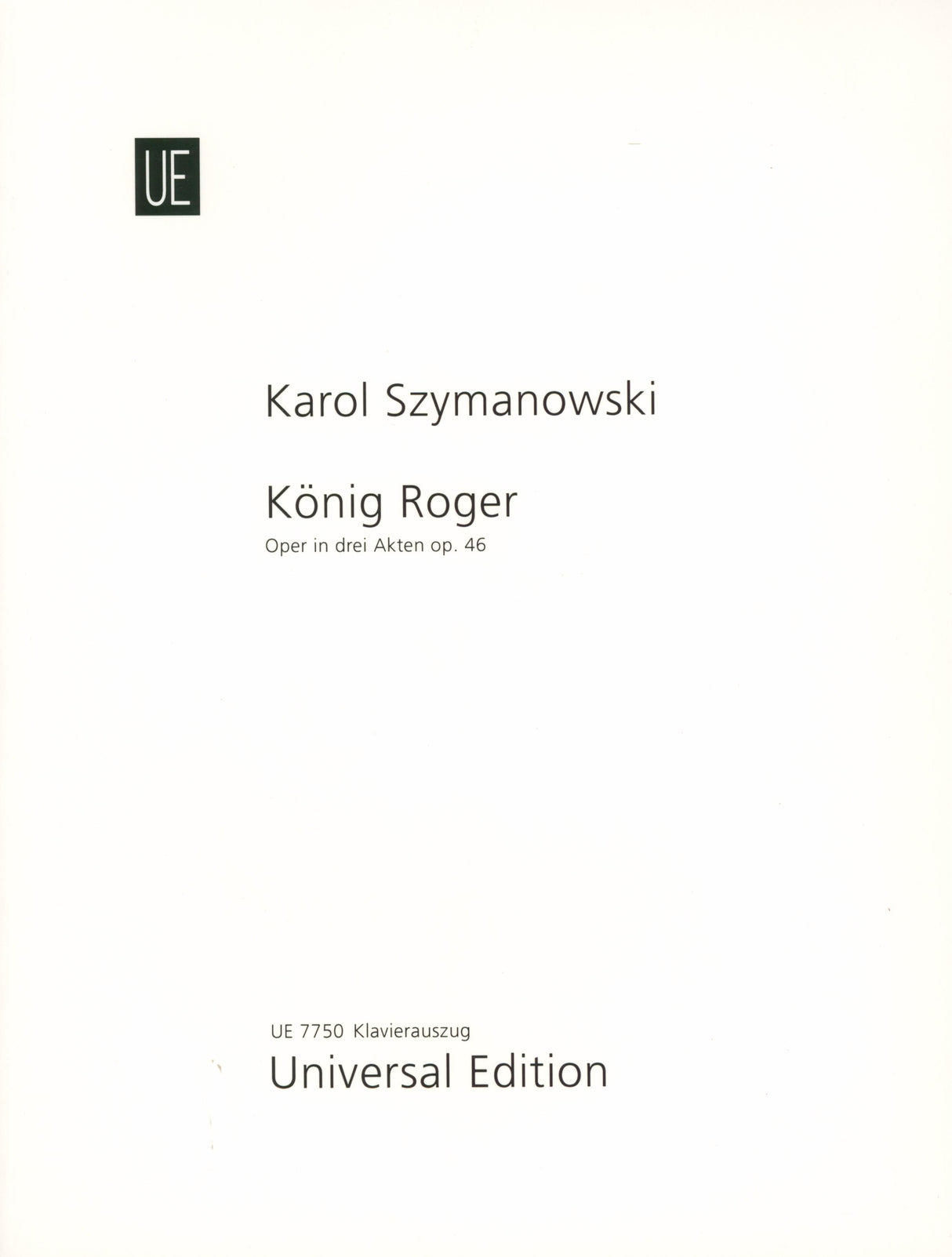Szymanowski: King Roger, Op. 46
In stock and typically ships within 1 business day.
- Composer: Karol Szymanowski (1882-1937)
- Instrumentation: Opera
- Work: King Roger, Op. 46
- Work Languages: German, Polish
- ISMN:
- Size: 9.1 x 12.0 inches
Description
The Polish composer Karol Szymanowski, who was born in 1882, the year Wagner died, must also be counted among the sound erotomens. If we ignore the Polish creative period of Szymanowski, many of his works are absolute sound maniatures. His opera King Roger is no exception.
On his travels to Italy and North Africa between 1908 and 1914, Szymanowski succumbed to the fascination of these countries and collected a great deal of material, which was reflected in King Roger. According to its genre, opera stands in the mysterious "no man's land" between opera, oratorio and mystery play. in the three acts of the opera, Szymanowski captured three different cultures - partly based on authentic musical material: Byzantism, the Arab-Indian Orient, and Greco-Roman antiquity.
The plot itself is rooted in Euripides' "Bacchantes" and depicts in three oratorio-like tableaux: the struggle between Apollo and Dionysus, between the intellect and the unconscious, and between the Christian church in medieval Sicily and the pagan faith.
The libretto that Szymanowski wrote together with Jaros?aw Iwaszkiewicz can only be traced back to historical facts regarding the persons of King Roger II, who ruled over Sicily from 1130 to 1154, and his advisor. Although the plot refers to typical counter-events of the time, it is fictitious as such.
What is decisive for this opera is that Szymanowski proves to be an absolute master of ecstasy, mysticism and misterioso.
Publishers use a lot of words to describe what they sell, and we know it can be confusing. We've tried to be as clear as possible to make sure you get exactly what you are looking for. Below are descriptions of the terms that we use to describe the various formats that music often comes in.
Choral Score
A score for vocalists that only contains the vocal lines. The instrumental parts are not there for reference. Generally, cheaper than a vocal score and requires multiple copies for purchase.
Facsimile
Reproductions of the original hand-written scores from the composer.
Full Score
For ensemble music, this indicates that the edition contains all parts on a single system (there are not separate parts for each player). In larger ensembles, this is for the conductor.
Hardcover
Hardbound. Generally either linen-covered or half-leather.
Orchestral Parts
Similar to a wind set, this is a collection of parts. In the case of strings, the numbers listed are the number of copies included, though generally these are available individually (often with minimum quantities required).
Paperback
When publishers offer multiple bindings (e.g. hardcover) or study scores, this is the "standard" version. If you're planning to play the music, this is probably what you want.
Performance / Playing Score
A score of the music containing all parts on one system, intended for players to share. There are not separate parts for each player.
Set of Parts
For ensemble music, this indicates that there are separate individual parts for each player.
Solo Part with Piano Reduction
For solo pieces with orchestra, this is a version that contains a piano reduction of the orchestra parts. For piano pieces, two copies are typically needed for performance.
Study Score
A small (think choral size) copy of the complete score meant for studying, and not playing. They make great add-ons when learning concertos and small chamber works.
Vocal Score
A score prepared for vocalists that includes the piano/organ part or a reduction of the instrumental parts.
Wind Set
For orchestral music, this is a collection of wind and percussion parts. The specific quantities of each instrument are notated.
With Audio
In addition to the printed music, the edition contains recordings of the pieces. This may be an included CD, or access to files on the internet.
With / Without Fingering (Markings)
Some publishers prepare two copies - a pure Urtext edition that includes no fingering (or bowing) suggestions and a lightly edited version that includes a minimal number of editorial markings.


